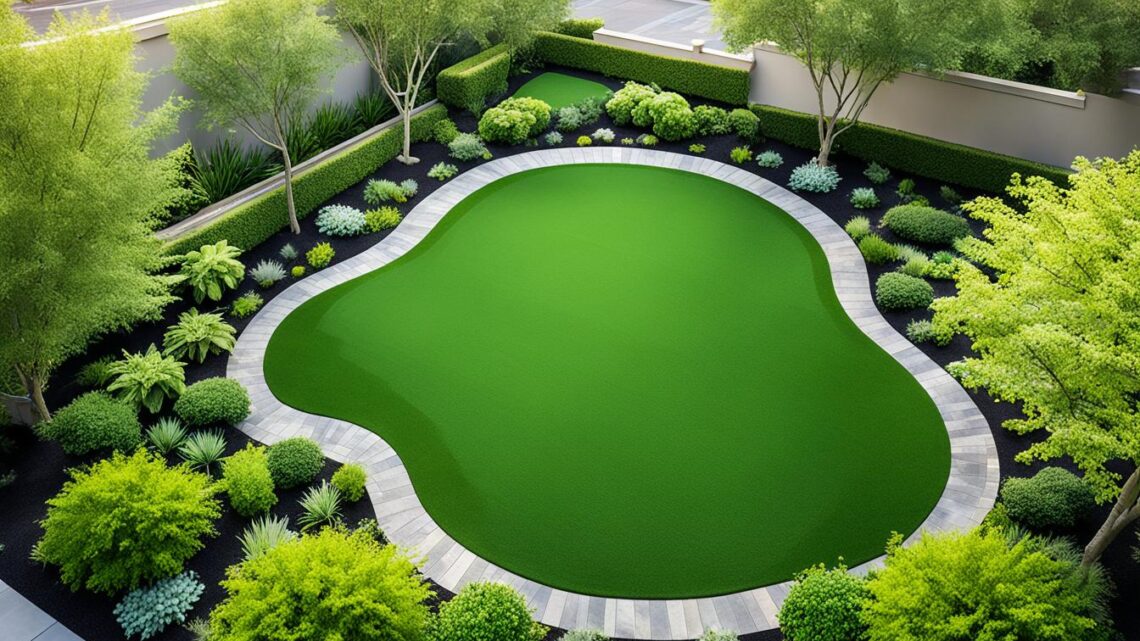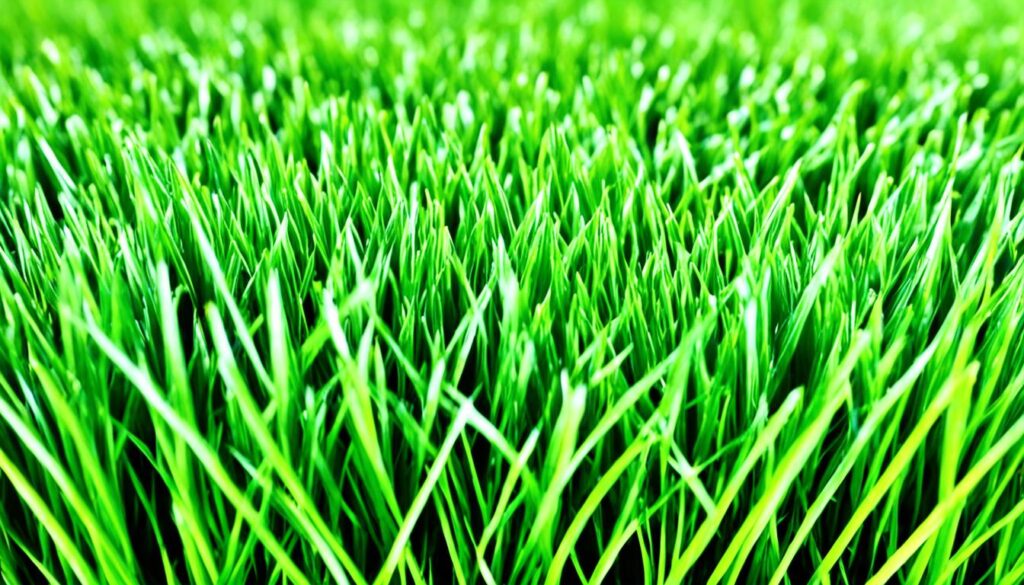
Are you tired of mowing, watering, and maintaining a natural lawn? Have you ever thought about synthetic turf? It’s a popular choice for many, offering a lush, easy-to-maintain outdoor space. This guide will show you the benefits and how to pick the best artificial grass for you.
Synthetic turf has improved a lot, offering many benefits. It’s easy to care for, lasts a long time, and looks green all year. But with so many types out there, picking the right one can be hard. We’ll help you find the best synthetic turf for your needs.
Understanding Artificial Grass Terminology
Artificial grass has many technical terms and specifications. These details affect the quality and performance of the turf. Let’s explore the key terms you should know.
Yarn Material
Artificial grass is made from yarns like polyethylene, polypropylene, or nylon. Polyethylene is the top choice for its versatility and durability. Polypropylene is used for putting greens and thatch, while nylon is the most durable but also the priciest.
Density
Turf density, or stitch count, is how many blades are in an inch. A higher density means the turf is more durable and looks real.
Pile Height
Pile height is how tall the grass blades are. Short pile heights, 3/8 to 5/8 inches, are for sports fields and busy areas. Longer heights, 1 1/4 to 2 1/2 inches, are for lawns and a luxurious look.
Face Weight
Face weight is the material amount per square yard of turf. A heavier face weight means the turf is more durable and of higher quality.
Thatch
Thatch adds fibers of different colors, weights, and textures to mimic real grass. It includes brown fibers for a realistic look in homes and businesses.
Infill
Infill keeps synthetic turf looking great. It keeps fibers upright, stabilizes the turf, and cushions feet and paws. Common infill materials are silica sand, crumb rubber, and Zeofill.
Backing
The backing of artificial grass has two parts: the primary and secondary backing. The primary backing is woven fabric that holds the fibers. The secondary backing locks the fibers in place. A good backing is key for stability and durability.
Color
Quality artificial grass comes in many colors to look like real grass. Picking a color that matches your local grass makes the turf look natural.
Sub-Base
The sub-base is vital for installing synthetic turf, as it’s the base layer. It’s made of materials like sand, granite, and gravel for drainage and soil stability.

Characteristics of the Best Synthetic Turf
When picking the best artificial grass, look for certain key traits. It should handle a lot of foot traffic and still look lush and full. It should also be durable and last a long time.
It should feel springy and have a good drainage system. Plus, it should have colors that look real and fight off germs.
Choosing top-notch synthetic turf means getting great value and fun. The best grass is tough, looks good, and works well. It fits many climates, uses, and budgets. This way, you get a space that’s easy to take care of but looks and feels like real grass.
The best synthetic turf also has UV resistance, good drainage, and fights germs. This keeps your grass looking good and clean over time. Whether it’s for your backyard, sports field, or where your pets play, focusing on these traits will help you pick the right one for you.



